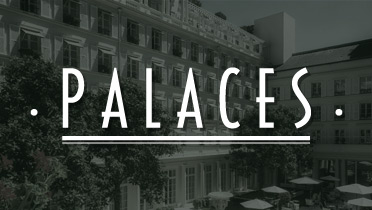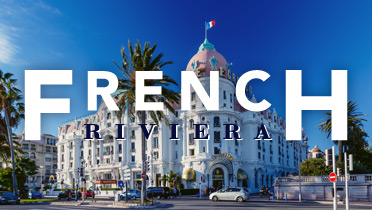India, Jaipur
Rambagh Palace
In the far distant Rajanthani, the Rambagh Palace hotel overlooks the streets of the region’s capital city. The celebrated Indian designer Amit Gahlot took this run down former palace and transformed it into luxury hotel with gold finishes, frescoes and mosaics, plunging visitors into the sumptuous and eccentric universe of the Jaipur maharajahs. The hotel’s 46 rooms and 33 suites open onto a 49 hectare garden and pay tribute to traditional Indian architecture. The marble interiors and silk fabrics cast a veil of elegance over this ancient palace. Although the controversial princely ceremonies of the past are over, the rumor is that they were replaced by more recent sumptuous celebrations thrown by Prince Charles, Jackie Kennedy and Aristotle Onassis.
Jaipur
Upon his return from the “land of spirituality”, the renowned French writer André Malraux was deeply impressed and called India “the other pole of our life”. He was fascinated by the religious fervor present on the streets of the city of Benares and the splendor of the iconographic representations decorating the sacred walls of the Ellora and Elephanta grottos. From this mysterious part of India, the peoples of Rajasthan continue to perpetuate their ancestral customs, traditions and way of life. Once the land of wealthy lords, it remained in the hands of the Rajpoute ethnic group, and the region has an extremely rich cultural and architectural heritage as witnessed in particular by the splendor and opulence of the capital, Jaipur. Built under the reign of the sovereign Sawai Jai Singh II, the city was painted in pink in honor of the visit in 1876 by the Prince of Wales. Jaipur, along with Delhi and Agra make up what is known as the “Indian triangle”.
Opulence and majesty
The tall, imposing Rambagh Palace, a daring blend of Rajpoute and Moghol architecture, dominates the streets of the “pink city”, the remains of an era when Jaipur discovered the modern world under the leadership of the sovereign Ram Singh II. This former princes’ residence has been converted into a luxury hotel belonging to the Taj Hotel chain. The palace walls plunge the visitor into the opulent, extravagant and decadent universe of these Rajpoute princes who were more inclined to squander their fortunes than to rule over the people. Gilded decorations, sculpted arches, frescoes, mosaics, pink marble and royal family portraits adorn the interiors, of which many are still intact, invoking the memories of the close ties the maharajahs had with the British crown. The Rambagh Palace has not lost any of the festive atmospheres that existed here in the past. Still today, numerous soirées and receptions are held around the immense swimming pool, decorated with mosaics. Rumor has it that sumptuous parties were organized here by Prince Charles, Jacqueline Kennedy and Aristotle Onassis, although nobody is around to prove it. The time of the Durbars and their opulent ceremonies did exist however, and serve as motivation for present day celebrations.
“When I was commissioned to renovate the palace, I immediately chose to preserve as much as possible of what already existed and what was part of our heritage. We wanted to respect the choice we made at the time and allow our guests to live the life of the former palace rather than create something entirely new. We therefore documented what had existed here and tried to bring it back to life in the slightest detail.” Arnit Gahlot – Indian designer
details about this hotel
Description:
Five stars / Member Taj Hotels & Resorts / Member Leading Hotels of the World / Palace / Luxury / Royal guesthouse / Architectural masterpiece / Princely way of life / 49-hectare gardens / Indian & International cuisine / Polo Bar / Jiva Grande Spa / Fitness center / Yoga classes / Indoor & outdoor pool / Babysitting service / Vintage car rides / Astrologer
When open:
Open all year
Number of rooms and suites:
46 rooms and 33 suites
Prices:
Double occupancy from 490 euros
Nearest airport:
Jaipur International Airport (JAI) - Jaipur
Hotel details:
RAMBAGH PALACE
Bhawani Singh Road
Jaipur - 302 005
Rajasthan
India
details about this country
Flight time from Paris:
Approximately 10 to 15 hours (depending on the destination)
Time difference from Paris:
+ 3h30 in summer / + 4h30 in winter
Climate:
India has three seasons:
- The rainy season (monsoon : heavy rain + heat) from June to October
- The cool season (October to March : generally mild temperatures)
- The hot season (February to June : torrid heat from 30°C to 50°C)
Necessary travel documents for French nationals:
Passport valid six months after return date
Visa required and valid for six months
Visa requests should be made at a consulate, 40 days before departure.
No vaccinations required
Currency:
The Indian rupee (INR)
Languages spoken:
Hindi, English
15 official languages and 1,500 dialects and minor languages
Book by phone
+33 1 75 43 70 26 *Our reservation department is always happy to assist you via phone or via email. We are open Monday to Friday 9am to 18pm (GMT +1).
- Best rates guaranteed
- Upgrade upon availability
- No booking fees
- Instant confirmation






















